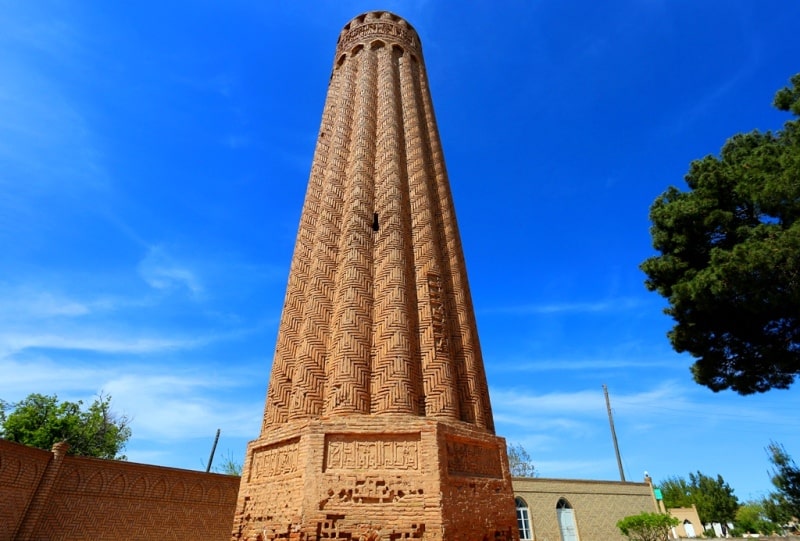For several decades, the famous Jarkurgan minaret has been haunting archaeologists, historians and just lovers of beautiful architecture. The thing is that the minaret is decorated with an unusual decorative ornament, which has never been used in Central Asia, but rather used in India.
The minaret is located in the village of Minor, located between Kumkurgan and Termez in Surkhandarya region. It was built in 1109 by order of Sultan Sanjar. Now its height is more than twenty meters, but at the time of construction it reached forty-three.

Clearly on the minaret you can see the name of its creator – master Ali ibn Muhammad from Serakhs, and also on the upper part you can see the holy text from the Koran, the phrases of which are unfinished. Due to the shifted axis of the minaret, it is assumed that it was unfinished or partially destroyed. In 1879, the ruins of an ancient mosque were discovered near the minaret, which proves the isolation of the construction of the tower. What happened to the minaret and why the mosque was destroyed, historians have not been able to come to a consensus. Perhaps the buildings were deliberately dismantled in order to erect a new building.
Looking at the tower, it is impossible to take your eyes off the decoration. The elaborately executed herringbone masonry creates a weaving effect. And when you stand under the minaret, it seems that the masonry is not brick at all, but fabric. The tower consists of sixteen semi-columns, which are adjacent to each other. Inside there is a spiral staircase that you can climb to the very top. Now the Dzharkugan minaret is carefully protected and is an important historical and cultural object.
Comment
Оригинальный минарет